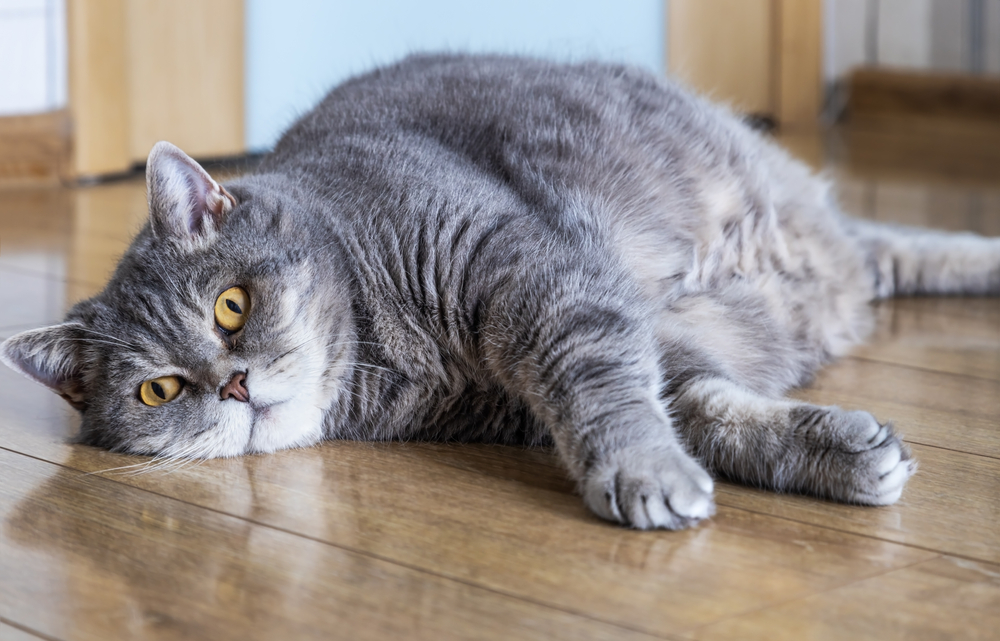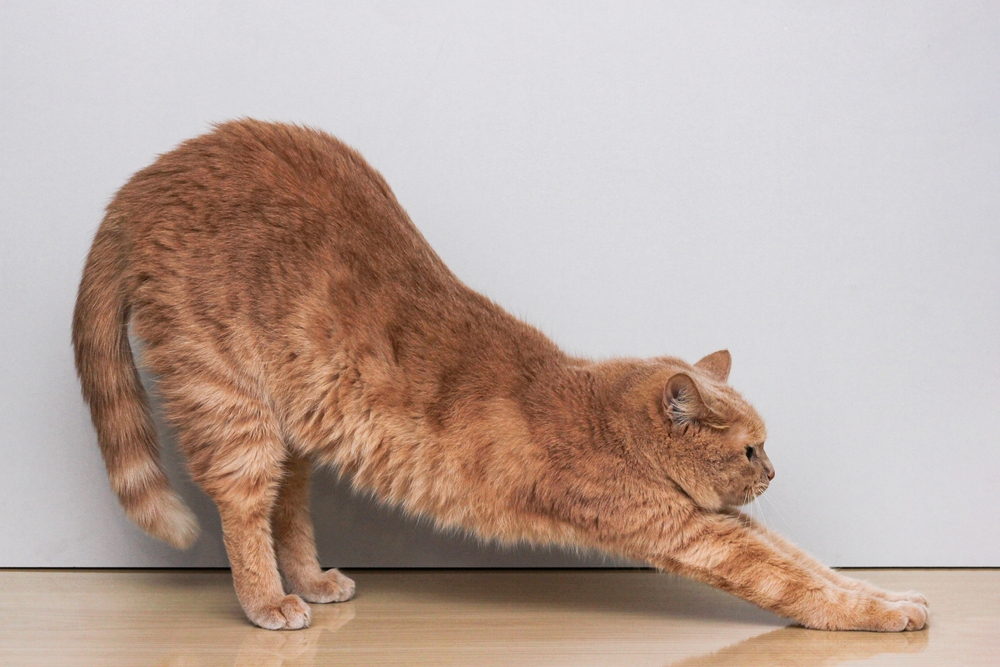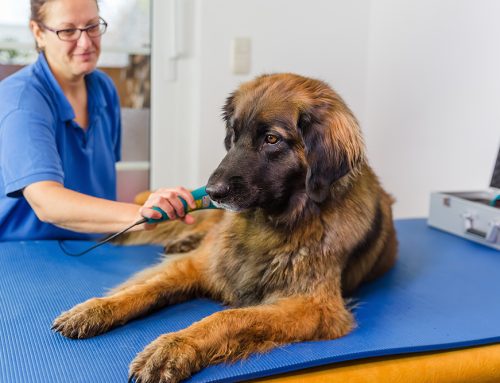Arthritis is more common in cats than most people think. Studies demonstrate that more than 90% of cats older than 10 years of age have evidence of arthritis on X-rays, but many cases go undiagnosed and untreated, because cats adeptly hide pain. Our Island Animal Hospital team wants your cat to have an optimal quality of life (QOL), and we provide valuable information about this concerning condition.
Understanding arthritis in cats
Osteoarthritis (OA) is a progressive disease that causes joint tissue degeneration to the cartilage, joint capsule, and surrounding bone. In cats, the underlying cause is typically unknown, but conditions, such as trauma, infection, immune dysfunction, and congenital abnormalities can lead to the disease. The joints most commonly affected in cats include the hips, knees, ankles, elbows, and spine. OA affects approximately 60% of adult cats and 90% of cats older than 10 years of age.
Recognizing arthritis in cats
Cats are notorious for hiding vulnerabilities, such as pain, making detection difficult. Keep your eye out for arthritis signs, including:
- Jumping-behavior changes — About 71% of arthritic cats are unwilling to jump, and 67% jump shorter distances than before the condition’s onset.
- Lameness — Overt limping is not a common arthritis sign, but the affected limb may demonstrate subtle lameness.
- Stiffness — A cat with arthritis may exhibit stiffness in the limbs, especially immediately after resting.
- Resting-behavior changes — Affected cats may rest or sleep more, and they may choose more easily accessible places to rest.
- Decreased interaction — Cats experiencing arthritis pain frequently hide more, avoiding interactions with people and other pets.
- Inappropriate elimination — Arthritic cats may have a difficult time navigating the litter box, urinating or defecating in inappropriate areas.
- Altered grooming — Affected cats may spend less time grooming, and have a matted, scruffy appearance. In some cases, a cat with arthritis may overgroom painful areas, causing hair loss or skin abrasions.
- Temperament changes — Painful cats may act uncharacteristically irritable or aggressive.
Diagnosing arthritis in cats
If your cat exhibits arthritis signs, schedule an appointment with us. Our Island Animal Hospital team will perform arthritis diagnostics, which may include:
- History — Our team takes a thorough history to determine the signs your cat is exhibiting at home. Your cat’s behavior history is extremely important, because many cats act differently in unfamiliar environments such as in a veterinary exam room.
- Physical exam — We perform a physical exam, carefully assessing your cat’s joints for pain, thickening, crepitus (i.e., bone-on-bone friction), and decreased range of motion.
- Blood work — We may recommend a complete blood count (CBC) and biochemistry profile to rule out other conditions, and ensure your cat is a good candidate for arthritis treatment medications.
- X-rays — X-rays are an important diagnostic tool to assess your cat’s joints for arthritic changes.
- Drug trial — We may recommend a pain medication trial period to determine how your cat’s arthritis is affecting them.
Treating arthritis in cats
Arthritis can’t be cured, but management strategies can greatly improve an arthritic cat’s QOL. Typically our Island Animal Hospital team recommends multiple techniques to treat your cat effectively. Treatment options include:
- Weight management — Excess body weight exacerbates strain on arthritic joints. Keep your cat at a lean body condition score (BCS), and if they are overweight, our team will devise a weight-loss program to help them safely lose the extra pounds.
- Medications — Medications such as non-steroidal anti-inflammatories (NSAIDs) are often used to help decrease an arthritic cat’s inflammation and alleviate their pain. However, these drugs can damage your cat’s liver and kidneys if not administered appropriately. In addition, an arthritic cat may benefit from a drug using monoclonal antibodies. Our veterinary team will determine your cat’s appropriate medication regimen.
- Physical therapy — Physical therapy can help overweight cats lose weight, and can also improve muscle and joint strength, and function.
- Supplements — We may recommend joint supplements, such as glucosamine, chondroitin, or omega-3-fatty acids, to help support your cat’s joint health.
- Environmental modifications — Modifying your home environment can help improve your arthritic cat’s QOL. Suggestions include:
- Provide comfortable, supportive beds in easily accessible areas where your cat likes to rest.
- Place steps or ramps so your pet can access favored areas such as sofas, window sills, and counters.
- Lower the opening in your cat’s litter box so they don’t have to jump to access and egress their bathroom.
- Ensure your cat’s litter box, food and water bowls, and scratching posts are in easily accessible areas.
- Elevate food and water bowls so your cat can eat and drink comfortably.
- Groom your cat frequently and keep their claws clipped.
- Surgery — In some cases, surgery, such as joint fusion and joint replacement, may be necessary to improve joint stability and alleviate pain to optimize your cat’s QOL.
Preventing arthritis in cats

In most cases, feline arthritis cannot be prevented. However, you can take steps to decrease your feline friend’s arthritis risk, such as:
- Scheduling regular wellness checks — Because cats are so good at hiding pain and illness, regularly schedule your cat’s veterinary visits, so our team can detect any adverse health condition, such as arthritis, in the early stages, when diseases are easier to manage.
- Keeping your cat indoors — Cats who live solely indoors are less likely to suffer traumatic car accident or animal attack injuries that can lead to arthritis.
- Keeping your cat at a lean body condition — Overweight and obese cats have a higher arthritis risk than cats who have a lean BCS. Calculate your cat’s daily energy requirements, and feed them appropriately to ensure they remain at a healthy weight.
If you suspect your cat has arthritis, contact our Island Animal Hospital team. We will assess your cat’s joints and devise an appropriate treatment strategy to alleviate their pain.





















Leave A Comment